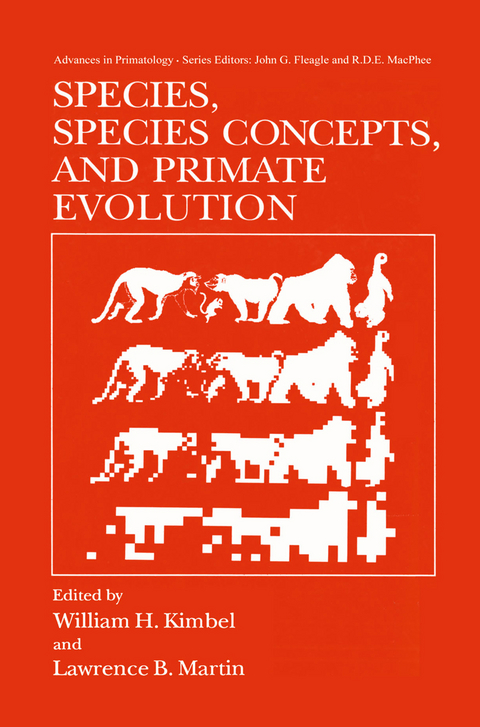
Species, Species Concepts and Primate Evolution
Springer-Verlag New York Inc.
978-1-4899-3747-6 (ISBN)
What, If Anything, Is a Species; N. Eldridge. Species Concepts; F.S. Szalay. Primates and Paradigms; J. Masters. Species, Subspecies, and Baboon Systematics; C.J. Jolly. Speciation in Living Hominoid Primates; C.P. Groves. Geographic Variation in Primates; G.H. Albrecht, J.M.A. Miller. Speciation and Morphological Differentiation in the Genus Lemur; I. Tattersall. Squirrel Monkey; (Genus Saimiri) Taxonomy; R.K. Costello, et al. Measures of Dental Variation as Indicators of Multiple Taxa in Samples of Sypatric Cercopithecus Species; D.A. Cope. Catarrhine Dental Variability and Species Recognition in the Fossil Record; J.M. Plavcan. Multivariate Craniometric Variation in Chimpanzees; B.T. Shea, et al. Species Concepts and Species Recognition in Eocene Primates; K.D. Rose, T.M. Brown. Anagenetic Angst; L. Krishtalka. Cladistic Concepts and the Species Problem in Hominoid Evolution; T. Harrison. 7 additional articles. Index.
| Erscheint lt. Verlag | 17.12.2013 |
|---|---|
| Reihe/Serie | Advances in Primatology |
| Zusatzinfo | XVI, 560 p. |
| Verlagsort | New York |
| Sprache | englisch |
| Maße | 155 x 235 mm |
| Themenwelt | Naturwissenschaften ► Biologie ► Evolution |
| Naturwissenschaften ► Biologie ► Zoologie | |
| ISBN-10 | 1-4899-3747-1 / 1489937471 |
| ISBN-13 | 978-1-4899-3747-6 / 9781489937476 |
| Zustand | Neuware |
| Haben Sie eine Frage zum Produkt? |
aus dem Bereich


